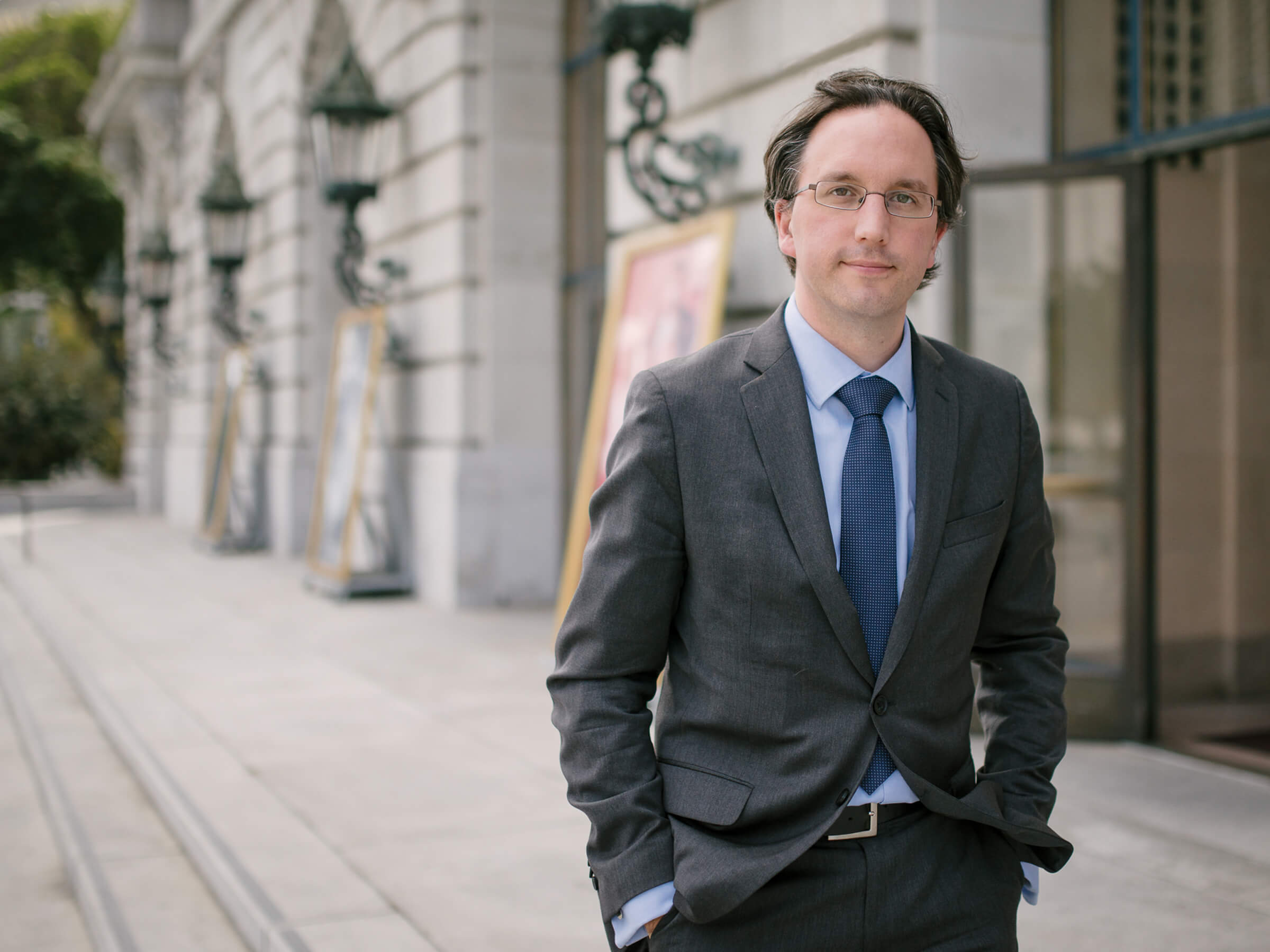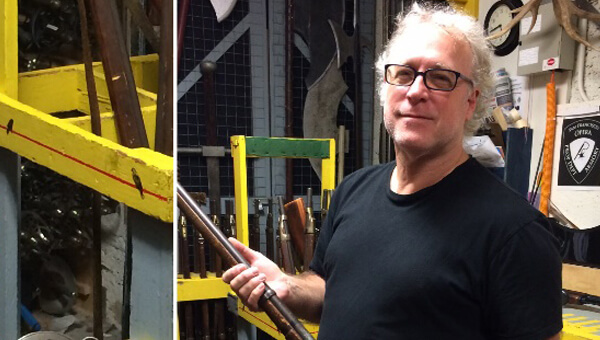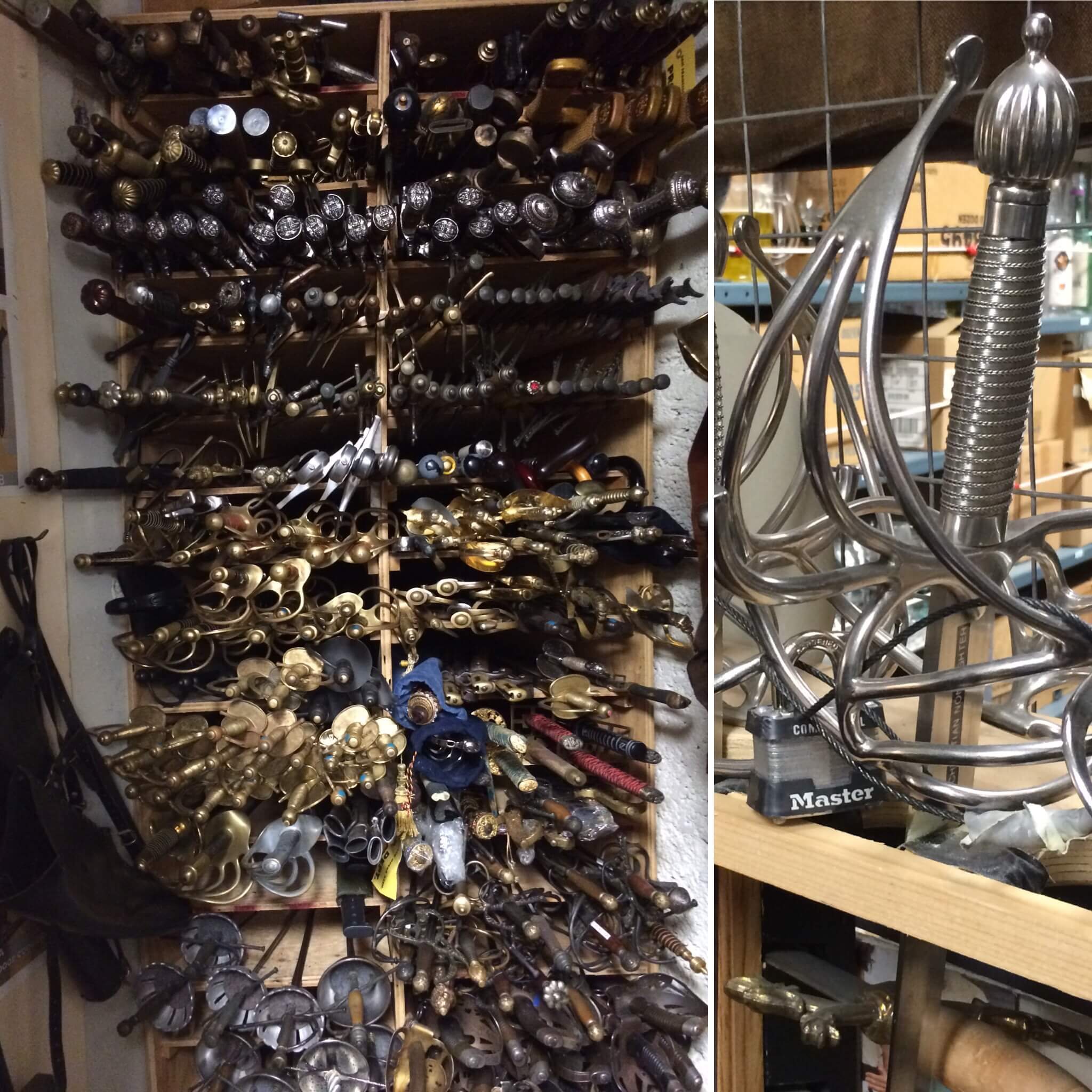Backstage with Matthew - September 19

Whether calling for a pair of dueling pistols in Eugene Onegin, 90 spears for Roman and Hun armies in Attila, or scores of swashbuckling swords in Cyrano de Bergerac, it is amazing how many operas call for weaponry of some kind. Because weapons don’t generally travel with a show (think of the raised eyebrows at customs were a case of 60 replica AK47s to pass through), the Opera maintains a well-stocked armory, covering a huge history from Celtic broadswords (such as Norma) to World War II pistols (such as Two Women). All of these armaments are in the very capable hands of Scott Barringer, SF Opera’s Master Armorer and a member of the Props (Properties) Department.
Scott had good training for this role. His father was a policeman for some 30 years and so Scott was aware of firearms growing up. He then apprenticed with legendary swordsmith Francis Boyd where he studied many skills including metallurgy. He has been the Opera’s Master Armorer for the last ten years, in which role he resources, buys, creates, stores, makes safe and trains in the use of the Opera’s weapons. He works in tandem with the Opera’s Fight Director, Dave Maier, ensuring that any artist using weapons onstage is fully trained to use the weapon safely and with dramatic accuracy. Even though weapons are either decommissioned, fake, or (in the case of swords, dulled), safety and security is of paramount importance, and as soon as an artist leaves the stage, they hand their weapons to a trained member of the Props Department.
Historical fidelity is incredibly important. You may be interested to know that the rifles used at the end of Tosca are real 1880s rifles, manufactured in Springfield, MA, and some of the most valuable items in the Opera’s collection (see photos). One of Scott’s favorite items is a Solingen saber from the 19th century, Eastern European in origin and almost certainly used in active combat, possibly during the Crimean war (see photos).



In our current repertoire, Dream of the Red Chamber is weapon-light, featuring only a single small ceremonial dagger. Andrea Chénier, however, has a robust sword requirement, seen in most active use during the fight scene between Chénier and Gérard in which the former draws his beautiful cane-sword (right, below) and the latter his 18th century French saber. Here’s a clip of that brief fight sequence before the two gentlemen realize they know and respect each other.
Over the years, the Opera has amassed quite the collection of swords from which to draw in productions like Andrea Chénier, arrayed historically in this impressive unit (below, left) from the oldest Celtic swords at the top to contemporary fencing foils at the bottom. Some of the most impressive swords came in Cyrano de Bergerac in 2011 with all of those exquisite early 17th century rapiers (see photos). Parenthetically, one of my first opera assignments in the UK working for New Chamber Opera was to go to the armory of the National Theater in London and bring back, on the train (!), a dress sword.
The expertise and rigor that Scott and his colleagues bring to the armory makes weaponry one of the incredible aspects of what we do at the Opera. Whether swords, pistols, rifles, grenades, knives, whips or a host of other weaponry, Scott ensures that the right weapons are safely in the hands of our artists on stage. But, even with the serious nature of the armory, a little levity is important. Like any good hunting lodge, the armory features some light-hearted trophies, including my favorite—the frog from the Opera’s old Rheingold, proudly mounted on the wall!

